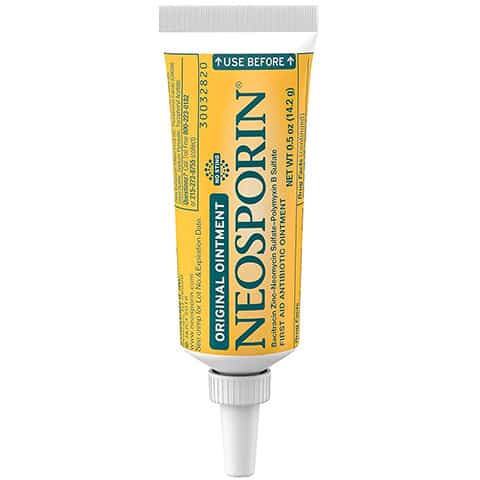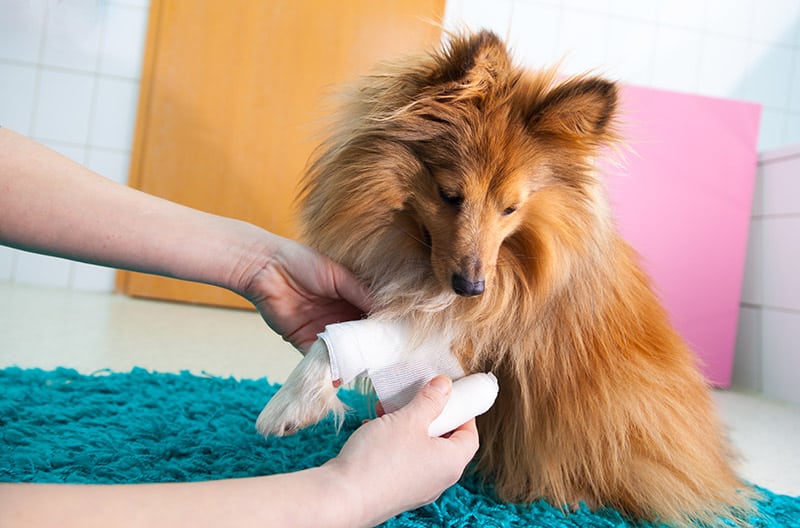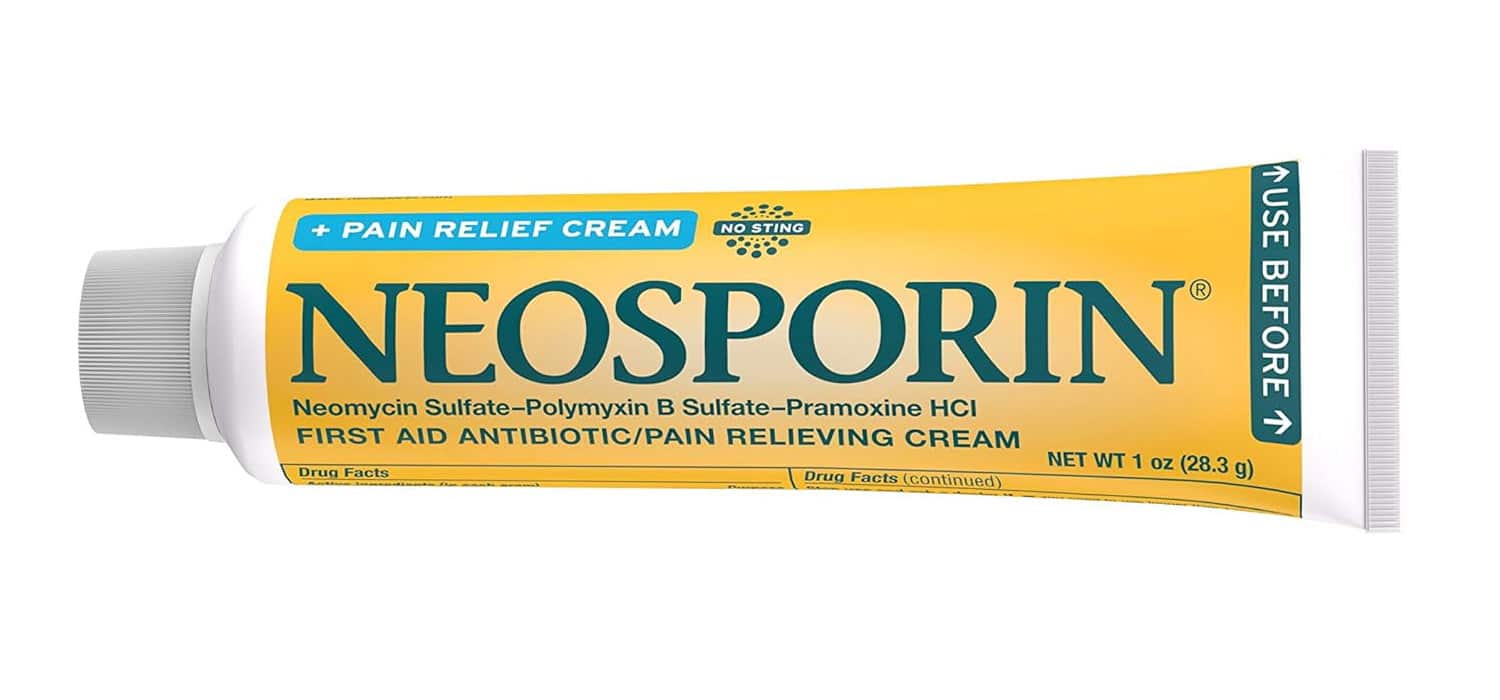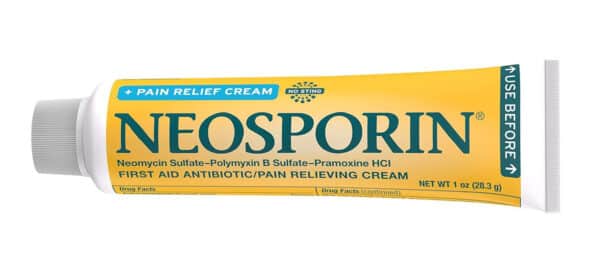A tube of antibiotic ointment Neosporin is handy to keep around for minor injuries, but is it safe to put on a dog? In some cases, you can use a small amount of Neosporin on your dog’s minor cut or scrape, but the full answer is less clear-cut.
There is some important safety information to know before you apply Neosporin to your dog, and that’s what this guide is all about.
Is Neosporin Safe for Dogs?
Yes and no. Many vets agree that though it’s intended for human use, Neosporin is typically safe when applied to minor injuries like scratches and scrapes in moderation and on occasion. The ointment can help keep infections at bay and protect the abrasion while it heals.
That said, Neosporin should not be used in large amounts or frequently, as it could interfere with the natural healing process. Furthermore, Neosporin should not be used on surgical incisions like spaying or neutering wounds unless your vet directs you to do so.
Experts also warn of the possibility of dogs licking their wounds and ingesting more than small amounts of Neosporin. If this happens, your dog could end up with an upset stomach, signs of which include vomiting and diarrhea. Though it’s unlikely—especially if you’re only using a small amount of Neosporin—if your dog manages to ingest a large amount of the ointment, it could cause toxicity.
For this reason, the Pet Poison Helpline urges dog parents to always get the green light from a vet before applying Neosporin or any other treatments. Your vet may recommend a more effective course of treatment.

What If My Dog Licked Neosporin?
If your dog only licked a little bit of Neosporin, they’ll likely suffer no ill effects at all. However, if they display signs like diarrhea, vomiting, tremors, excessive drooling, seizures, appetite loss, or skin lesions, please contact your vet.

Dog Abrasion First Aid
Note: We recommended calling your vet first to check whether it would be appropriate to use Neosporin if you’ve chosen it as an antibacterial ointment.
If your dog gets a little scrape or scratch, cleaning the wound clean is the main priority. Here are some steps to follow:
- Scissors or dog clippers (optional)
- Water-based lubricant (optional but don’t use Vaseline)
- Paper towels or clean cloth
- 2%–4% antiseptic solution
- Antibacterial ointment
- Warm water
Steps
- Wash the wound and surrounding area with some warm water to remove debris.
- Dry the area by patting it with a clean cloth or paper towel.
- Apply a dog-safe, no-sting 2%–4% antiseptic on the area. You can find plenty of these commercially, and it’s good to have some on hand. Chlorhexidine or povidone-iodine are good options.
- Apply a small amount of dog-safe antibacterial ointment (no hydrocortisone or other corticosteroids).
- If the abrasion is an area your dog can reach to lick, put a light bandage on it. Otherwise, monitor your dog to make sure they don’t lick it.
- Continue to use the antiseptic solution two or three times daily and keep applying the antibiotic cream until the wound heals.
If hair is covering the wound, you can trim the area carefully after applying a water-based lubricant to the wound. The lubricant helps reduce the risk of the wound becoming contaminated. Wipe the lubricant off when you’re done trimming.

When Should My Dog See a Vet?
At-home cleaning and first aid are fine if your dog only has a small abrasion, but if the wound bleeds heavily, looks deep, or your dog appears to be in pain, you’ll need to have them checked out and treated by a vet. Bite and other puncture wounds should also be seen by a vet promptly.
Final Thoughts
To sum up, while it’s usually fine to use a bit of Neosporin on minor abrasions, there is always the risk that your dog will lick it off, so it’s best to check with your vet before use. Avoid applying Neosporin to more serious wounds—your vet needs to check these out and decide on a course of treatment.










